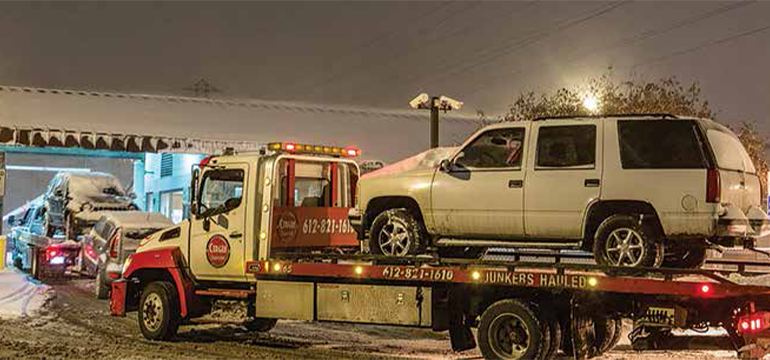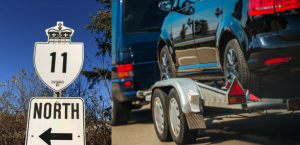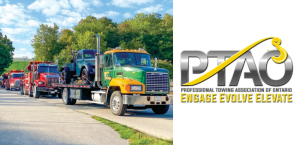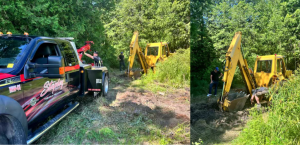Building up an effective fleet in an industry of individualists
Establishing a visual identity for your brand through your vehicles has other benefits. For one thing, uniformity provides a sense of professionalism to your operators–which will help you win over potential clients.
Something about making your living on the open road attracts a certain type of rugged individualist into the auto recovery sector. If there’s one thing that individualists tend to avoid, it is working together–unless they believe it is to their advantage.
Of course this means that the primary duty for fleet managers is creating a business model which makes it clear to operators that they are better off working with the fleet than competing with it.
That might sound like herding cats, but there are a number of ways to make it clear to your team that they are better off working with you than competing against you.
So how do you rally a bunch of independently minded operators around one banner? Here are a few ideas.
Develop a recognizable brand
 If your fleet’s name is in the minds of drivers and partner business owners, your drivers will be better off.
If your fleet’s name is in the minds of drivers and partner business owners, your drivers will be better off.
So how do you go about building recognition? It all starts with a paint job. Tow trucks themselves are excellent advertisements–and, unlike billboards, they can be seen over much larger areas.
Establishing a visual identity for your brand through your vehicles has other benefits. For one thing, uniformity provides a sense of professionalism to your operators–which will help you win over potential clients. The more clients, the easier time you’ll have convincing your operators of the benefits of being a part of a bigger team.
There is another trick related to image uniformity to give the impression of increased professionalism. Fair warning, though, it might be harder to get your team behind you on. That trick? Uniforms.
In truth, the pitch should be pretty simple. Ask yourself–and your operators–what impression they have of schools where the students wear uniforms compared to ones without dress codes. Most people agree that schools with uniforms seem more academic and the students better behaved than schools without them–whether or not that is actually the case!
Don’t go around measuring people for blazers, though. A simple, branded overall with safety reflector will be more than enough!
Build broad connections
Establishing connections are key to finding success in any industry—but, for tow truck businesses, they can be a matter of life and death. For growing companies, ensuring your operators have access to as large a market as possible means figuring out ways to establish the brand in the minds of people in the area- -and that means getting the word about your business.
One tried-and-true business practice is setting times to meet with local business leaders whose work dovetails with your own. In the towing sector, that means meeting with local collision and auto salvaging business managers, or lot owners.
The goal of initial meetings with these business leaders should never be to walk away with a formal agreement. Instead, fleet managers should aim to do two things. The first: to make it clear that your company is eager to provide a tailored service to partner businesses.
The second: to identify the ways competing businesses are letting these potential clients down–and working out ways to be better. At the end of the day, most businesses will make decisions based on what company makes life easiest for them. Convincing them to give your business a shot to impress them means you have already cleared the biggest hurdle.
Get Operator Buy-In
 Brand recognition is a good thing right up until the point that it isn’t.
Brand recognition is a good thing right up until the point that it isn’t.
The more established a brand is, the bigger the risk is that someone on your team will sully it by doing something silly!
Unfortunately, there’s not a whole lot you can do to ensure that each member of your team is serving as an excellent brand ambassador. There are, however, a few techniques that could help encourage them to.
The easiest is to establish some system which incentivises group success without holding back individual overachievement. The easiest way to incentivise, of course, is through paycheques.
Many businesses offer a yearly bonus based 75 percent on individual achievement, and 25 percent on organizational success. Easy to understand, this ratio strikes a good balance between individual hard work, and co-operation.
There is an even more effective technique, though it does come with an increased risk. At some high return investment companies, actual bonuses can be achieved by reaching transparently set individual performance targets, as well as by reaching organizational targets. In setting these targets, it is important the goals are realistic, but not a sure thing. If the targets seem impossible, they will actually serve to decrease morale. Too easy, and they will cause a dip in motivation.
One way some businesses work around this balance problem is to set a sliding reward scale. The higher the target hit, the bigger the reward.
EXPERT ADVICE
Nadeau’s Collision Service has been in business for more than 40 years in Peterborough Ont. Owners Kirk Edwards and co-owner Jenn Eggleton recently expanded into the towing industry.
In order to highlight the new services offered by the long-time establishment, the owners painted an eye-catching silver and green design on their trucks, which are parked in front of the business while not in operation.
According to Eggleton, making sure the the business’s is well-liked by the communities it serves takes more than catching the customer’s eye—as well-known is very different from wellliked. It begins with encouraging staff members to engage with the community on a personal level.
“I think everyone here is personally involved and represents Nadeau’s somehow in the community. Personally I live on a First Nations Reserve so I belong to the council,and sit next to the chief as a councilor. We’re involved in all parts of the community.”












